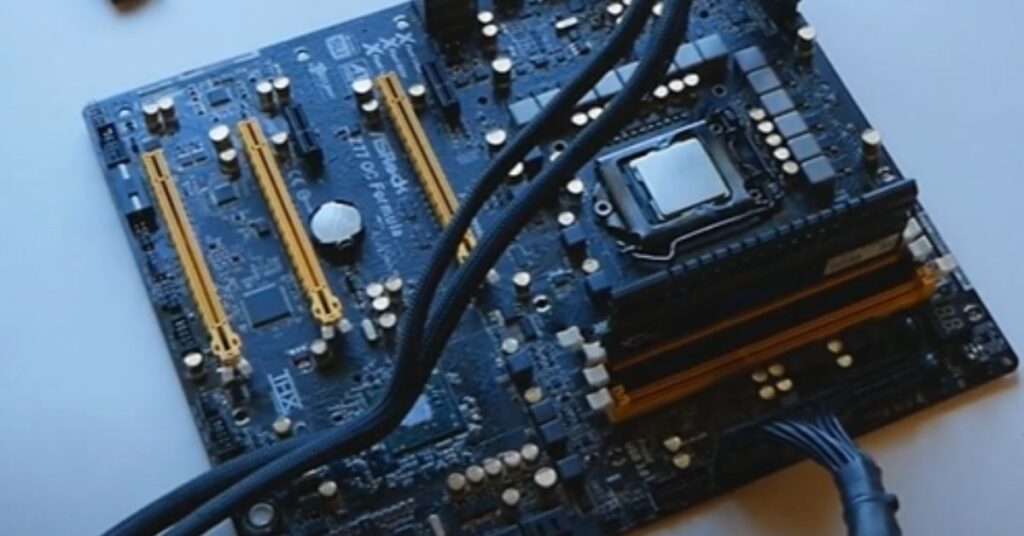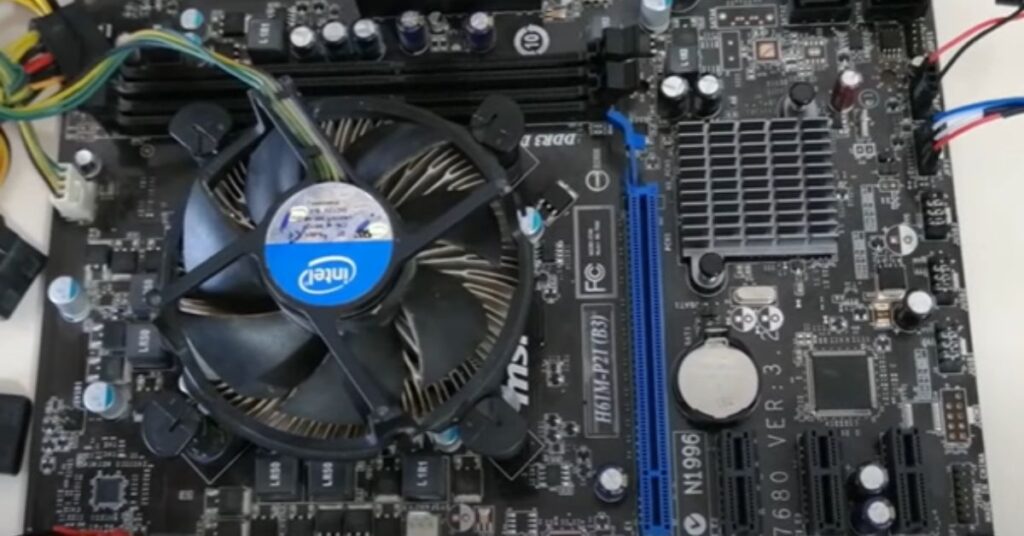The motherboard and graphics card in your computer are like the bones and muscles of your system, respectively. The entire setup may be in danger if one of these parts begins to malfunction. Knowing when to recognize warning signs of trouble is essential.
In this post, we’ll walk you through the common indicators that your motherboard or GPU might be on the fritz. By learning to recognize these symptoms, you’ll know whether your motherboard or GPU is bad or not, and then you better equipped to troubleshoot any computer issues that come your way Now let’s get started.
Table of Contents
Signs of a Failing Motherboard

The Computer Won’t Turn On
When your computer won’t turn on, this is one of the most obvious symptoms of a failing motherboard. If the power button remains depressed after pressing it, there may be damage or malfunction to the motherboard. Numerous problems, including a malfunctioning power supply, broken connections, or internal component failure, could be the cause of this. If you try to turn on your computer and it doesn’t respond at all, there’s a good chance that the motherboard is the problem.
Random Shutdowns or Restarts
Experiencing random shutdowns or restarts with no apparent cause is another common sign of a failing motherboard. If your computer suddenly powers off or restarts unexpectedly, it could indicate underlying issues with the motherboard’s components. These shutdowns may occur sporadically and without warning, disrupting your work or activities. While software issues can also cause random shutdowns, persistent occurrences suggest hardware problems, possibly stemming from the motherboard. If you find your system frequently rebooting or shutting down on its own, it’s worth investigating the motherboard’s health.
Error Beeps
Your motherboard communicates hardware issues through a series of beeps during the Power-On Self-Test (POST) process. These beep codes serve as a diagnostic tool, alerting you to potential problems with your system’s components. Listen for any unusual beep sequences when you start up your computer. If you hear unfamiliar or repetitive beeping patterns, it could indicate a malfunctioning motherboard or other hardware issues. Pay attention to the number and duration of the beeps, as they can provide clues about the nature of the problem.
Peripheral Devices Not Recognized
You might experience problems with USB ports, audio jacks, or other connectors on your peripheral devices if your motherboard is malfunctioning. If a device is plugged in but is not detected by your computer, there may be an issue with the power distribution or connectivity of the motherboard. This may show up as intermittent device recognition issues or no detection at all. If you discover that several peripherals are frequently not working even though they function properly on other systems, this is probably an indication that your motherboard is having problems.
Symptoms of a Failing GPU

Display Problems
One of the most noticeable signs of a failing graphics processing unit (GPU) is display issues. You might start seeing abnormalities on your screen, such as discoloration, flickering, artifacts, or lines appearing out of nowhere. These visual distortions can vary in intensity and may worsen over time. If you notice unusual graphical glitches while using your computer, it’s a strong indication that your GPU could be failing. Keep an eye out for these symptoms, especially if they become more frequent or severe.
Crashing During Graphics Tasks
You may frequently crash or freeze when doing graphics-intensive tasks, such as watching videos or playing games if your GPU is malfunctioning. Your system may suddenly lock up or display error messages as a result of these crashes. Tasks that primarily depend on graphical processing might not be able to be finished without experiencing stability problems. When using GPU-intensive apps, if you frequently experience crashes or freezes, it’s a good sign that your graphics card may be malfunctioning.
Black Screen
An unsettling indication that your GPU might be failing is a black screen. This happens when the graphics card fails to send any signal to your monitor, leaving it completely dark. A problem with the GPU’s rendering capability is indicated by the lack of any visual output, even though other parts like fans might still be working. When using a computer, a black screen can appear out of nowhere, especially when doing graphics-intensive tasks. If a black screen appears out of nowhere, your GPU is probably having serious problems.
Overheating
Excessive heat and loud fan noise can indicate problems with your GPU’s cooling system, signaling potential overheating issues. When a graphics card becomes too hot, it may struggle to maintain stable performance, leading to system instability or crashes. You might notice your computer’s fans working overtime in an attempt to dissipate heat from the GPU. Over time, prolonged overheating can damage the graphics card and degrade its performance further. If you experience unusually high temperatures or persistent loud fan noise, it’s essential to address the issue promptly to prevent potential damage to your GPU.
Importance of Identifying Hardware Issues
- Prevents Further Damage: Recognizing hardware problems early can prevent them from worsening and causing additional damage to your computer components.
- Saves Time and Money: Prompt identification allows for timely repairs or replacements, reducing downtime and avoiding costly repairs or replacements in the long run.
- Maintains System Performance: Addressing hardware issues promptly helps maintain optimal system performance, preventing slowdowns or crashes caused by malfunctioning components.
- Preserve Data Integrity: Hardware failures can sometimes lead to data loss or corruption. Identifying issues early helps mitigate the risk of data loss and ensures the integrity of your files.
- Enhances User Experience: By resolving hardware issues swiftly, you can ensure a smoother and more reliable computing experience for yourself or your users.
Final Thoughts
You can accurately determine whether a motherboard or GPU failure is most likely the source of your computer issues by recognizing these warning signs. Whether the GPU is exhibiting visual glitches or the motherboard is refusing to turn on, recognizing these symptoms early on can prevent additional frustration and possible data loss.
To properly address the underlying hardware issues if troubleshooting doesn’t resolve them, you should consider professional repair services. Recall that prompt action can help restore your computer’s functionality and avert future, more serious problems.
Frequently Asked Questions
Can I repair a failing motherboard or GPU myself?
Repairing a failing motherboard or GPU often requires technical expertise and specialized tools. While some issues like loose connections or minor component replacements may be DIY-friendly, significant repairs are best left to professionals to avoid further damage.
How can I prevent my motherboard or GPU from failing?
Regular maintenance, such as cleaning dust from your computer’s internals and ensuring proper airflow, can help prevent overheating, which is a common cause of hardware failure. Additionally, handling components with care during installation and avoiding overclocking beyond recommended limits can prolong the lifespan of your hardware.
How long do motherboards and GPUs typically last?
The lifespan of motherboards and GPUs can vary depending on factors such as usage, environmental conditions, and manufacturing quality. On average, you can expect a motherboard to last around 5 to 10 years, while GPUs may last anywhere from 3 to 8 years with proper care.
